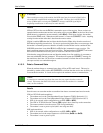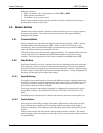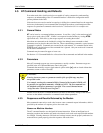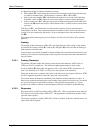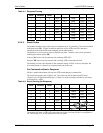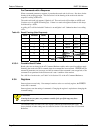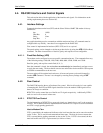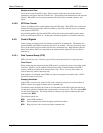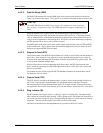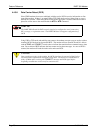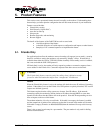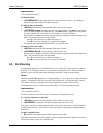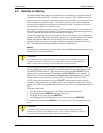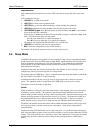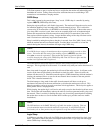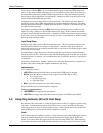
User’s Guide Local DTE/DCE Interface
2110212 Rev 1.0 Page 27
4.4.3.2. Data Set Ready (DSR)
The DART 300 modem will leave the DSR signal active whenever the modem is powered on.
There is no control of this signal. This signal is not an indication that the modem is ready for use.
DART 200
The DART 200 allowed the DSR control signal to be configured to track connection,
RF coverage, or registration status. The DART 300 does not support configuration of
DSR.
When the modem resets or power cycles, the initialization takes approximately 8 seconds.
Provided the host asserts RTS, the modem will send the OK result code. CTS is then asserted
(with or without RTS) to indicate that the modem has completed its internal initialization and is
ready to receive commands or data from the host. If RTS was off when initialization completed,
the OK message will be sent as soon as RTS is asserted.
The DSR signal can be used to force other control signals to the modem (such as DTR and RTS)
to the asserted state. This is done in some null modem configurations and cases where the local
host does not support RTS/CTS flow control.
4.4.3.3. Request to Send (RTS)
The local host must assert the RTS signal whenever it is ready to receive data from the modem on
the Rx line. If the local host is not prepared to accept incoming data for any reason, it must de-
assert the RTS signal indicating that the modem must hold data until RTS is again asserted. This
is true for both command and data states.
If the local host device does not support hardware flow control, the RTS signal must be tied
active; usually by connecting it to the DSR output of the modem. In this case, data overrun and
data loss are possible.
The modem does not use the original RTS/CTS handshake definition for transmit flow control.
See Section 4.4.2.1 for details.
4.4.3.4. Clear to Send (CTS)
The CTS signal is asserted by the modem when it is ready to receive data from the local host on
the Tx line. If the modem’s transmit buffers fill, the modem will de-assert the CTS signal
indicating that the local host should hold data until CTS is again asserted. If the local host does
not respect this flow control, some data may be lost by the modem. See Section 4.4.2.1 for details.
4.4.3.5. Ring Indicator (RI)
The RI indicator signal can be used as a “wake-up” signal to a sleeping host. Note that the host
must continue to assert RTS while sleeping. When a packet arrives, the modem will assert RI in a
one-second on, three-seconds off, duty cycle (mimicking the ringer on a North American wireline
telephone). The host can then awake, assert DTR, and receive the packet.
Full details of the behaviour and implementation are provided in Section 5.5 below.



